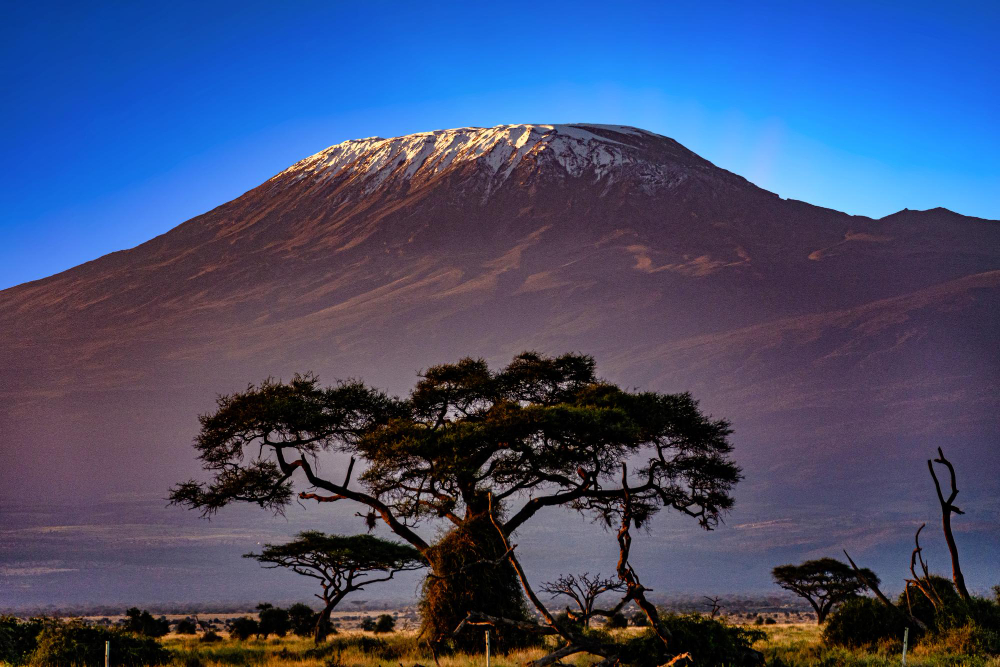Bags are packed, boots are laced, and excitement is bubbling up. It’s time to enjoy the beautiful journey to Kilimanjaro with friends or family.
Now that you are finally set for an adventure to climb Mount Kilimanjaro by booking a fantastic tour package to Africa’s highest peak!
Before you leave, you must be excited to learn more about Mount Kilimanjaro’s incredible ecological diversity.
It is a single mountain on which you can trek through lush rainforests teeming with life and then continue upwards into a world of cold, windswept plains. That’s the magic of Kilimanjaro—the chance to explore a whole range of ecosystems in a single climb.
Buckle up because you will discover the charming wonders that are waiting for you on this majestic mountain!

A World in One Mountain: Exploring Kilimanjaro’s Climate Zones
You have made a fantastic choice by booking Mt. Kilimanjaro Tour Packages.
As Mount Kilimanjaro has five special weather zones, allowing you to see different wildlife as you hike.
You will be amazed to see how fast the temperature changes here, from boiling springs to Arctic degrees, during a single climb.
So, are you excited to know more about it? Then keep reading till the end!
Zone 1: Cultivated Savannah
Altitude Range: 2,600 to 6,000 feet (792 to 1,800 meters)
Temperature Range:
Days: 70-90°F (21-32°C)
Nights: 40-60°F (4-15°C)
- As your journey begins, you travel from Arusha or Moshi, which shares common routes on Kilimanjaro, towards the park entrance. You will see signs of people living and working in the area. There will be livestock grazing and small farms where people grow crops. This human activity has changed the natural vegetation. The mountain’s southern side gets more rain and has fertile soil from past volcanic eruptions, making it a good place for farming.
- Coffee plantations and traditional farms thrive in this zone.
Vegetation: Scrubland and lowland forest.
Zone 2: Montane Forest or the Rain Forest Zone
Altitude Range: 6,000 to 9,200 feet (1,800 to 2,800 meters)
Temperature Range:
Days: 70-90°F (21-32°C)
Nights: 40-60°F (4-15°C)
- Encircling the entire mountain is a montane or tropical rainforest.
- Dense and damp, this forest hosts various bird and animal species.
Vegetation: Trees covered in “old man’s beard,” orchids, and lush foliage.
Zone 3: Heath and Moorland
Altitude Range: 9,200 to 11,000 feet (2,800 to 3,350 meters)
Temperature Range:
Days: 50-80°F (10-27°C)
Nights: 30-60°F (-1 to 15°C)
- The forest abruptly gives way to the heath and moorland zone, revealing magnificent views.
- Scrubby shrubs, giant heathers, and tussock grasses dominate this area.
- Some people consider the lower part of this region to be similar to the Highlands of Scotland.
- You’ll encounter giant lobelias and senecios, which have adapted to the drastic temperature swings.
- Senecios grow taller, with leaves that die, insulating the trunk like fur.
- Lobelias close their leaves at night for warmth.
Zone 4: Highland Alpine Desert Zone
Altitude Range: Above 11,000 feet (3,350 meters)
Temperature Range:
Days: Varies (cooler)
Nights: Cold
- This zone lacks significant vegetation.
- You’ll encounter giant groundsels and rock formations.
- The landscape becomes more barren as you climb up.
Challenges: Harsh conditions due to altitude and extreme temperatures.
Zone 5: Arctic Summit Zone
Altitude Range: Above 16,000 feet (4,877 meters)
Temperature Range: Extremely cold
- The region at the peak is defined by snow and ice.
- Glaciers cover the upper reaches of Kilimanjaro.
Challenges: Altitude sickness, extreme cold, and thin air.
Spotlighting the Unique Flora and Fauna of Each Zone
Now that you know about the unique climate of Mt. Kilimanjaro, let’s show you what kind of fascinating wildlife you can see here:
Cultivation Zone
Flora
- This zone features lush farmlands, coffee plantations, and grassy slopes.
- You’ll find vibrant greenery, including sycamore trees, junipers, and moss (often called “old man’s beard”).
- Notable endemic plant: Impatiens kilimanjari.
Fauna
- Elephants, zebras, and various antelope species graze in the foothills.
- While big game sightings are rare, this zone still hosts some wildlife.
Birds: Tropical Boubous, Hartlaub Turacos, Green Wood Hoopoes, and Silvery-cheeked Hornbills.
Primates: Blue monkeys, colobus monkeys, and olive baboons.
Other occasional species: Civets, leopards, mongooses, bush pigs, dik-dik, and Abbott’s duikers.
Montane Forest Zone
Flora
- Dense montane forests thrive in this zone.
- Towering tree ferns, sycamore trees, and junipers dominate the landscape.
- Mosses and epiphytic plants add to the lushness.
Fauna
- The abundance of avian species will excite birdwatchers.
- Look out for the striking Hartlaub’s Turaco, Silvery-cheeked Hornbill, and sunbirds.
- Primate sightings include the black and white colobus monkey.
Other inhabitants: Civets, leopards, mongooses, and the elusive Abbott’s duiker.
Heath and Moorland Zone
Flora
- Heather and tussock grasses dominate this rugged landscape.
- Unique plants like giant groundsel, Senecio trees, and colorful red hot pokers thrive here.
- Mist, rather than direct rainfall, nourishes this zone.
Fauna
- Animals face challenges due to the harsh conditions.
- Look for the four-striped grass mouse, red-eyed doves, white-necked ravens, and Malachite sunbirds.
- Mole rats and the elusive, harsh-furred, climbing mouse are more challenging to spot.
- Rare bird sightings may include the bearded vulture with its vast wingspan.
Alpine Desert Zone
Flora
- This arid and desolate landscape receives slight rainfall.
- You’ll find minimal plant diversity, but everlastings and a few yellow daisies persist.
Fauna
- Harsh conditions make it challenging for animals to survive comfortably.
- Few animals inhabit this zone.
Arctic Summit Zone
Flora
- Rock and ice dominate this frozen moonscape.
- Virtually no life exists here.
- Lichens grow at about 0.5mm annually and are among the few survivors.
Fauna
- None. The harsh conditions preclude animal survival.
- The summit is a realm of extreme cold and intense solar radiation.
Sustainable Trekking Practices for Exploring Kilimanjaro
Now that you have gone through Kilimanjaro’s different climate zones and wildlife, you must Fexplore it responsibly.
Here are some sustainable trekking practices to keep in mind:
- Choose a Reputable Tour Operator: Look for a tour company committed to eco-friendly practices. Check for certifications like “Leave No Trace” and inquire about their waste management, water source protection, and local community involvement when you book your Mt. Kilimanjaro Tour Packages.
- Pack Mindfully: Avoid single-use plastics. Instead, bring reusable water bottles and food containers. Pack biodegradable toiletries and choose quick-drying clothes to minimize water usage for washing.
- Respect the Local Environment: Stay on designated trails to prevent erosion and avoid disturbing wildlife.
- Proper Waste Disposal: Pack all your trash, including food scraps and toilet paper. Many tour operators provide portable toilets or use designated waste disposal sites.
- Minimize Campfire Impact: If campfires are permitted, use designated fire rings and only burn dead, fallen wood.
- Support Local Communities: Purchase from local artisans and choose locally sourced food on your trek. This injects income directly into the communities that help preserve Kilimanjaro.
- Leave No Trace: This principle goes beyond waste. Disassemble campsites completely, minimize noise pollution and respect the mountain’s cultural significance.
Conclusion
Kilimanjaro’s diverse ecosystems offer trekkers a once-in-a-lifetime adventure. But remember, with great experiences comes great responsibility.
As a responsible traveler, you must embrace sustainable practices to ensure the mountain’s beauty thrives for future generations.
Well, this is for all those who have already booked and begun their journey.
But trekkers who are still thinking of going on a Kilimanjaro adventure should know that Africa Paradise Adventures offers eco-conscious tours that prioritize the environment and local communities.
Book your unforgettable trek and explore the magic of Kilimanjaro!






